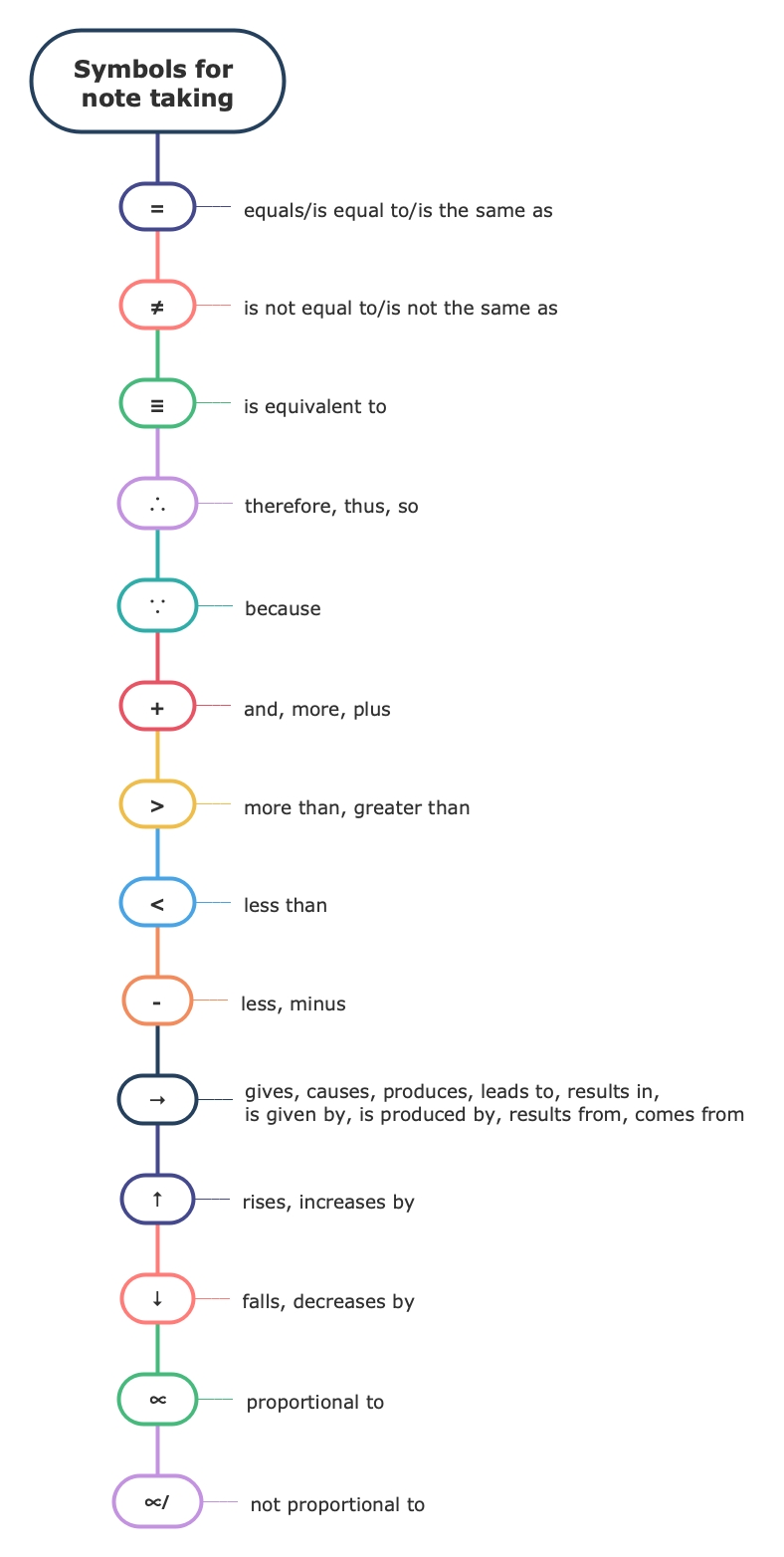How to take notes: 5 Most Effective Note-taking Methods
Edraw Content Team
Contemplating which note-taking method to use?
EdrawMind helps move ideas forward, faster and better. Learn from this note-taking guide about all types of different note-taking methods and how effectively you can master them! Try EdrawMind for free now!
In academics or the professional world, note-taking is a general practice that emphasizes writing down important information systematically. Some effective note-taking skills are considered important transferable skills, as they can easily be applied in different verticals, like social, work, life, and academics. In this detailed guide to understanding note-taking in detail, we will help you understand some advantages of making an effective note-taking strategy and introduce you to some amazing note-taking methods that ensure you record the information captured from a different source in the best way possible.
In addition to this, we will help you understand how the mind map is a great way of taking notes for specific subjects and how EdrawMind lets you create mind maps to handle simple or complex topics.
1. First Step: Make an Effective Note-Taking Strategy
Every student in a classroom session is keen on taking notes. However, when you give a quick glance at those notes, you will soon realize that some of those notes are just jumbled words that students might forget in the future, and some of the students have followed a note-taking strategy to ensure that everything remains in the right order and at the time of any examination or class-test, they do not get confused with all the information that they have added in their notes. Even at your college, some of the instructors expect the students to create a connection between the classroom lectures and reading assignments -- by doing this, they are expecting that the students will create an opinion about the given material or topic. By creating a note-taking strategy, you can easily complete those expectations.
Making a note-taking strategy seems like a dull exercise, but it is important for several reasons, like:
- A good note-taking strategy will support how well you have understood the topic.
- It allows you to give a test yourself about your understanding of the given study material or what you actually heard in the classroom.
- Compared to listening skills, a note-taking method will let you remember the material better.
- It also gives you an idea about what is important to the lecturer.
- If you have created a note-taking method using a mind map, it automatically becomes your ultimate study material.
Some of the important advantages of creating an effective note-taking method are:
- It improves your focus on smaller details.
- It promotes active learning in those students who lack in certain areas.
- By creating notes of your material, you can boost your comprehension and even retain the information for a longer period.
- It also extends your attention span to the study material or topics.
- If you go ahead with mind maps for creating notes, you have started walking on a path that leads to an increase in your creative skills.
Now that you have understood the importance of creating a note-taking strategy, there are a couple of tips that you should follow to get the maximum result from your writing efforts. Some of the key advice that experts share in this field are:
- Always add dates and topics at the top of the note.
- Summarize the facts and ideas concisely.
- Recite the notes as often as you can to retain the information.
- Always reflect on what you have penned, so you will know which areas need further revision.
2. The 5 Best Note-Taking Methods with Templates
Every student can follow a note-taking method as per their expertise, but here we will help you understand some of the best note-taking methods that let you create well-organized notes and ensure that your notes can easily be shared with others. As you should know:
- You can use the outline method of taking notes on your laptop when the instructor is well-organized and follows a pattern while dictating the subject.
- You should go ahead with Concept maps if you need to show the relationship among different sets of ideas.
- A student can opt for Cornell Methods for analyzing key concepts and then organizing notes for revision or review.
The five best note-taking methods are:
1 Outline Note-Taking Method

(For Win)
(For Mac)
(For Linux)
The outline note-taking method is to summarize the primary points systematically. A simple example of an outline note-taking method is when an author outlines the entire novel where they write down the important details of a planned novel. An outline note-taking method is one of the most common note-taking methods out there as it simplifies everything for the reader.
While working on outline note-taking methods, the students use bullet points or arrows to indicate a new thought. In comparison, every important lecture topic is highlighted or placed farthest to the left of the note-taking page.
This outline note-taking method is best for:
- Those students who prefer to outline everything about a subject.
- Those students prefer to study through quick notes.
Advantages
-
The entire information is recorded logically and hierarchically.
-
It is a very common practice among students, and as a result, most teachers are aware of this note-taking method.
-
The outline note-taking method is one of the easiest and quickest ways to take notes so that you can review pre-exams.
Disadvantages
-
It might be difficult to take notes using this method if you are studying some complex topics from science, technology, engineering, or mathematics.
-
Remember that the outline note-taking method requires strong concentration because you cannot miss out on any sub-topic. Otherwise, adding those sub-topics becomes a task in itself.
2 Mapping Note-Taking Method
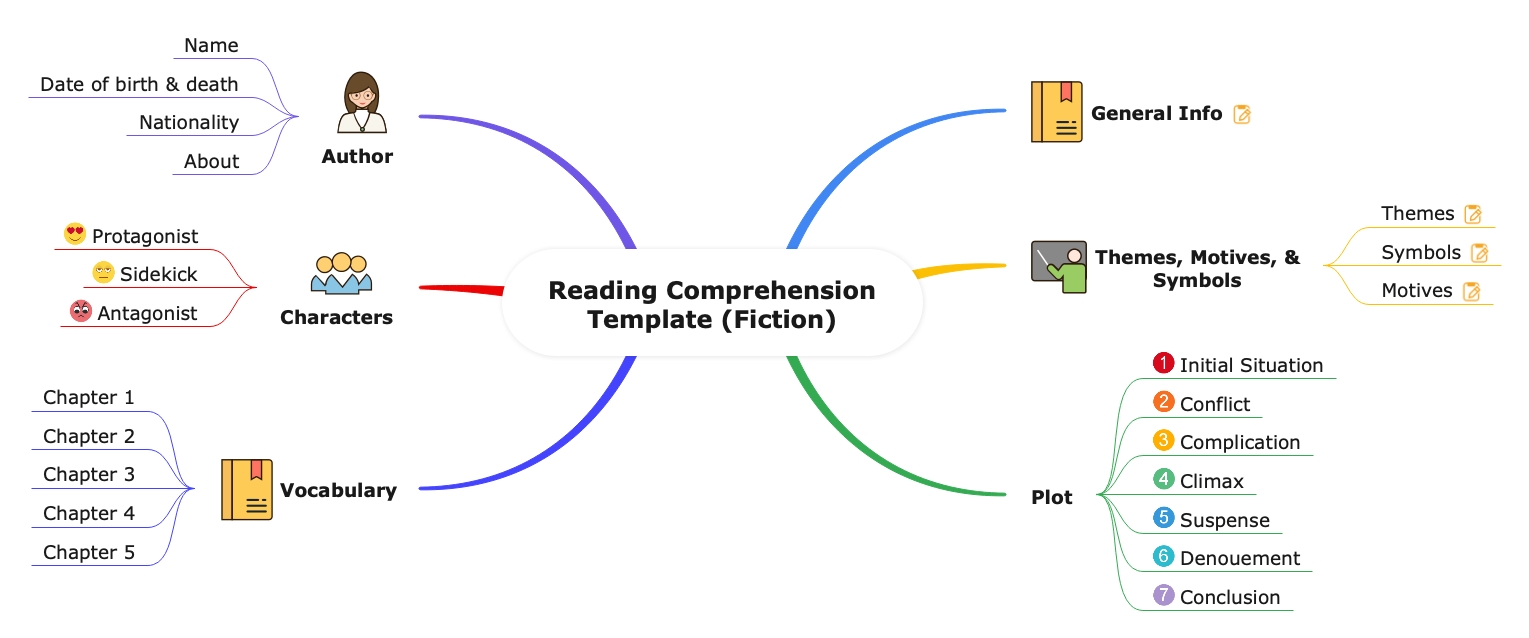
(For Win)
(For Mac)
(For Linux)
As the name suggests, the mapping note-taking method provides a graphical illustration of all the information, ideas, concepts, and facts provided to you during your lecture. The format of using the mapping note-taking method is very straightforward -- you write down the main topic in the center of the document and start connecting different related topics or ideas. With the help of the correct tool, a student can even add different colors or images to those subtopics.
In the educational stream, the mapping note-taking method maximizes active participation from students, which also leads to critical thinking. It should be noted here that the mapping note-taking method is very fast and effective and is widely used by researchers or authors who work on complex subjects.
The mapping note-taking method is best for:
- For those students who have access to well-defined structured information.
- For those students who love to analyze visual connections between different ideas and concepts.
Advantages
-
It implants a great visual learning style in students at an early age.
-
Provides a comprehensive view of any large study topic.
-
It is extremely simple to create a mind map in tools like EdrawMind that allows maximum active participation from the students.
Disadvantages
-
If you are creating a map on paper, it becomes tedious if you need to add any other important subtopic.
-
Just like the outline note-taking method, it also requires strong concentration.
3 Charting Note-Taking Method
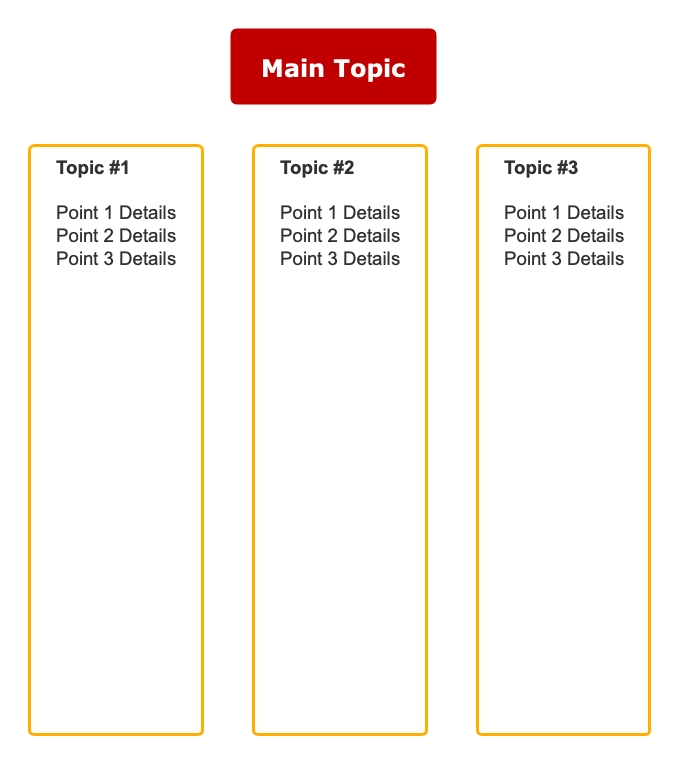
(For Win)
(For Mac)
(For Linux)
As the name suggests, a charting note-taking method uses charts to organize notes. On the academic front, the charting note-taking method involves breaking down the document into several columns and rows filled with respective information. By using a chatting note-taking method, a student ensures that they can efficiently make comparisons between different topics and ideas.
The charting note-taking method is very straightforward. First, you need to determine the different categories that are going to be covered in the classroom. Then you can easily record information into receptive categories. For instance, let us assume that you are studying geography, where the teacher talks about different countries. So, you can create a column by mentioning the name of different countries. When the lecturer talks about individual countries, you can start adding the respective information in those columns.
The charting note-taking method is best for:
- Those cases where you need to record facts and figures.
- Those scenarios are where you need to categorize different information based on their respective theme.
Advantages
-
Considered a very powerful note-taking method for those subjects that heavily rely on statistics and facts.
-
If you need to create important comparisons between different topics of the same subject.
-
Unlike other note-taking methods, it requires a very limited amount of space and time.
Disadvantages
-
It sometimes is unsuitable for most topics or subjects that have different sets of diagrams.
-
It requires a basic understanding of the topic even before you start creating different columns.
-
Unlike the mapping note-taking method, it is an extremely time-consuming process.
4 Cornell Note-Taking Method
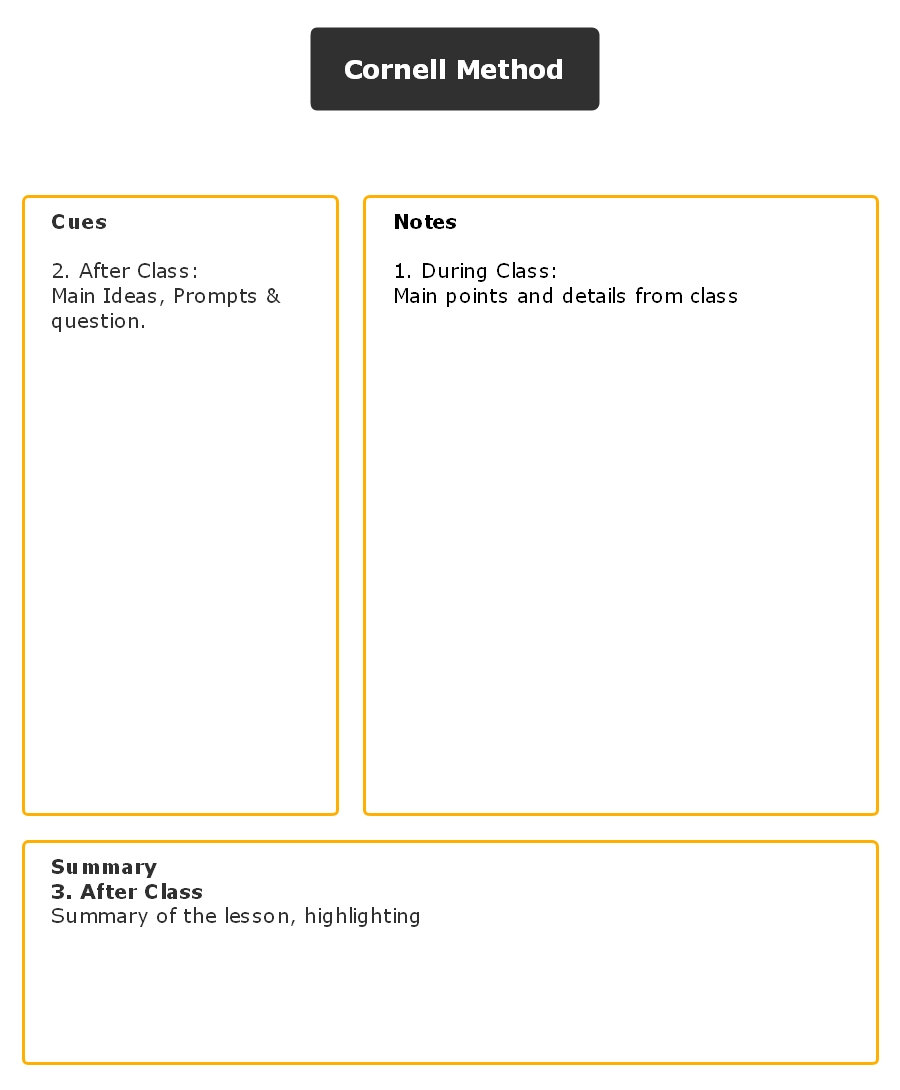
(For Win)
(For Mac)
(For Linux)
Just like the outline note-taking method, the Cornell note-taking method is also one of the oldest and most used note-taking methods out in the market. The process of using the Cornell note-taking method is very simple -- you have to create two columns (Cue and Note), together with a single bottom row (we call it the summary section), which helps in recording the notes. As you see, the Cornell note-taking method can be used in most topics. In a general sense, the Cornell note-taking method has three important verticals: Recording the Notes, Review the Notes, and Summarizing the Notes.
Since the Cornell note-taking method follows a specific pattern, it allows the students to think critically about the key concepts and later explain them in detail, making it easier to retain for a longer period.
The Cornell Note-Taking Method is best for:
- Recording main concepts and creating questions related to the given study topic.
- One can use the Cornell note-taking method in almost all lecture situations.
Advantages
-
It is considered organized and systematic for recording all kinds of notes. With this note-taking method, you can also easily review them.
-
Unlike other note-taking methods, it requires very little effort.
-
A student can complete the entire learning cycle within one single page.
Disadvantages
-
You are bound to purchase a specific note-taking paper if you need to implement this method.
-
Most of the time, you will find it difficult to organize large quantities of Cornell notes.
5 Sentence Note-Taking Method
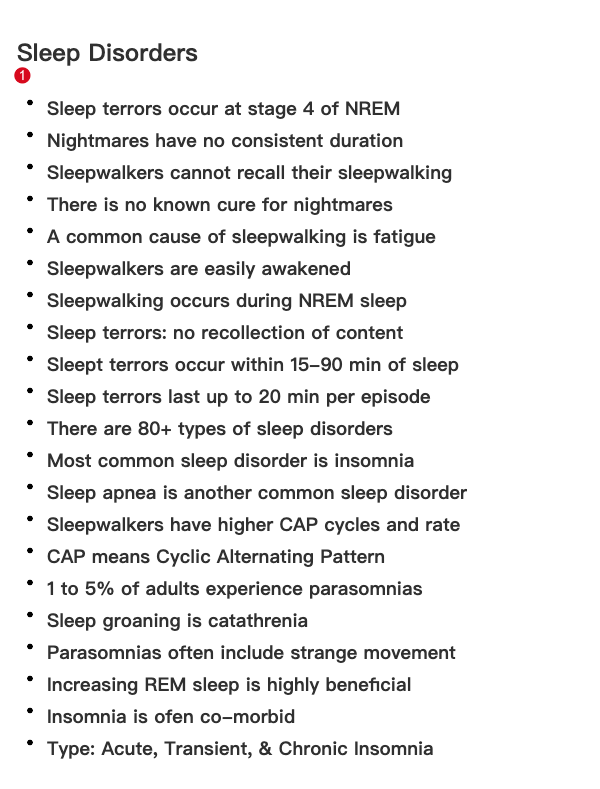
(For Win)
(For Mac)
(For Linux)
The sentence note-taking method uses sentences that are separated by lines to quickly note down as much information as possible in the lecture. In simple words, write down everything that you find important in one single sentence and then head to another line to write down another important sentence.
It should be noted here that the sentence note-taking method requires amazing typing or handwriting speed. At the same time, since most of the students go ahead with this kind of note-taking method, it becomes easier for them to take a quick glimpse of it and retain valuable information.
The sentence Note-taking method is best for:
- Curating quick and unstructured notes.
- Students can use this method if they know the subject a little but do not know how the important factors fit together.
Advantages
-
A little more organized from the paragraph writings.
-
It allows the student to add all the information in one single paper quickly.
Disadvantages
-
It would become extremely tedious and confusing if you had an oversized collection of notes.
-
It does not provide any interlinking between concepts or ideas or even between different sets of notes.
3. Useful Note-Taking Tips
Now that you have understood different note-taking methods check out some of the most common and useful note-taking tips. Note-taking is a very subjective process, and it depends from student to student and subject to subject. So, useful tips for note-taking can vary easily. That being said, we have added the most useful note-taking tips that you can add to your day-to-today study in order to perform efficiently.
- Use Symbols & Abbreviations
Using symbols and abbreviations is considered one of the most useful note-taking tips. Make a note of important symbols and learn the most common abbreviations before you start creating the notes. Once you have mastered these symbols and abbreviations, it makes it extremely easier for you to work around your note-taking skills. Some of the most common abbreviations that students use these days are:- Etc: And the rest
- Para: paragraph
- Ch.: Chapter
- No.: Number
It should be noted here that symbols and abbreviations can differ from subject to subject. For instance, Chemistry has a whole set of abbreviations, and Finance or Marketing has its own sets of acronyms. As a student of these subjects, you should master all of them beforehand.![Abbreviations Acronyms for note taking]()
![Symbols for note taking]()
- Use Concept Maps & Diagrams
As you saw here, using mapping or concept maps to take down notes is a perfect method that helps in creating some creative notes. You can create concept maps as per different topics or your understanding of those topics. - Always be prepared
Always be prepared when taking notes. You do not know when your instructor will start talking about certain diagrams or start using formulas to explain any topic. As a student, you should understand this and learn to add them effectively to your notes. - Use Color Codes
It is considered a good practice always to use different colors to highlight important topics. - Write Small Phrases
Instead of going ahead with long sentences that will under your writing speed, you should always go ahead with smaller phrases that you can make out during your study phase. - Structure Your Notes
Always structure your notes in such a way that you can easily distinguish between chapter, lesson number, topic number, etc. - Make Groups
Always try to use readable handwriting or a font that will not make your note unnecessarily messy for other readers. - Use a good font for handwriting
As you saw here, using mapping or concept maps to take down notes is a perfect method that helps in creating some creative notes. You can create concept maps as per different topics or your understanding of those topics. - Use tools
Instead of going ahead with paper, you should use tools like EdrawMind that easily lets you work on your notes. With these tools, you can easily make revisions that will not affect the overall structure of your notes. - Stay organized
Keep your notes separate from other topics or handouts.
4. Key Takeaways
Note-taking is a very general and useful process of studying anything. As you saw in this guide, an effective note-taking method helps students retain what they have studied in their class so they can use this material to study and build their knowledge to solve more complex problems or excel in their examinations. Based on your topic and your personal skills as a student, you can go ahead with any or all types of note-taking methods. What matters here is that you take notes in such a way that helps you study effectively.
You can start using tools like EdrawMind to make your notes. With this 2D mind mapping software, you can take multiple notes in a single file that you can later share with your classmates. The amazing feature of using EdrawMind is that the tool is created for beginners and professionals alike. This way, you will not be wasting too much of your study time making notes, as this tool comes with free pre-built templates that easily let you take notes as per your subject or topic. If you are looking for remote collaboration with your classmates, you can go ahead with EdrawMind Online, which comes with personalized cloud space, allowing you to collaborate better.
You May Also Like
Creating Mind Maps With AI: A Quick Step-by-Step Guide
HOW-TO & TIPS
Creating a SWOT Analysis Chart With EdrawMind AI
HOW-TO & TIPS
How to Make a Mind Map in Word
HOW-TO & TIPS
How to Open and Edit a Mind Map in Office 365
HOW-TO & TIPS
How to Create a OneNote Mind Map
HOW-TO & TIPS

